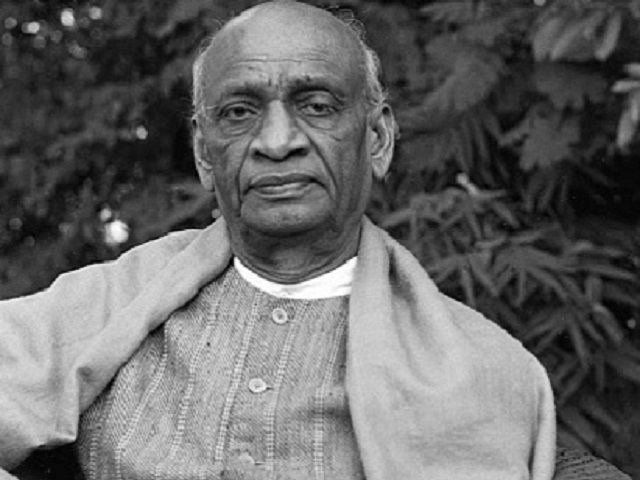Sardar Vallabhbhai Patel: Honoring the Architect of Unified India – A Biography

Sardar Vallabhbhai Patel served as a distinguished leader within the Indian National Congress and played a significant role in the Indian Freedom Struggle. His subsequent positions included being India’s inaugural Deputy Prime Minister and the first Home Minister. Sardar Patel’s indelible contribution lies in the seamless integration of 565 princely states into the newly established independent India.
Vallabhbhai Patel’s early life
Vallabhbhai Patel was born on October 31, 1875, in Nadiad, Gujarat. His birth anniversary is now commemorated as National Unity Day or Rashtriya Ekta Diwas.
Coming from a family of farmers, Patel’s early years projected him as an unambitious individual destined for a mundane job. However, he defied such expectations by proving his mettle. Through self-guided studies with borrowed books, he managed to successfully pass his law examination.
After passing the bar examination, Patel practiced law in various cities in Gujarat including Godhra, Borsad, and Anand. His prowess as a fierce and adept lawyer earned him a notable reputation in legal circles.
Patel’s Journey to England
In 1911, at the age of 36, two years after the death of his wife, Vallabhbhai Patel journeyed to England and enrolled at the Middle Temple Inn in London. Patel finished at the top of his class despite having had no previous college background. He completed the 36-month course in 30 months. Returning to India, Patel settled in Ahmedabad and became one of the city’s most successful barristers.
Sardar Vallabhbhai Patel’s role in the Indian Freedom Movement
During the initial phases of the freedom struggle, Patel’s engagement with active politics and the principles of Mahatma Gandhi was not fervent. However, a momentous turning point occurred when he encountered Mohandas Karamchand Gandhi in Godhra in 1917, a meeting that significantly reshaped Patel’s trajectory.
Subsequently, Patel aligned himself with the Congress and assumed the role of secretary within the Gujarat Sabha, a group that would later evolve into a stronghold for the Congress.
Responding to Gandhi’s appeal, Patel made the courageous decision to relinquish his hard-earned profession, dedicating himself to the movement’s cause. This commitment manifested during the Kheda crisis of 1918, when he contributed to the fight for tax exemption in the midst of a plague and famine.
Embracing Gandhi’s Non-Cooperation Movement in 1920, Patel embarked on a journey across Western India, actively recruiting a staggering 300,000 members. His efforts went beyond mere recruitment; he also succeeded in amassing over Rs 1.5 million to bolster the party’s financial resources.
Amidst the backdrop of a British law prohibiting the hoisting of the Indian Flag, Patel’s leadership became evident. When Mahatma Gandhi faced imprisonment, it was Patel who spearheaded the Satyagraha movement in Nagpur during 1923, challenging the oppressive British law.
Sardar Vallabhbhai Patel as Congress President
Following the endorsement of the Gandhi–Irwin Pact, Patel ascended to the role of Congress President during its 1931 session held in Karachi.
The Congress party embraced a steadfast commitment to safeguarding fundamental rights and civil liberties, with Patel fervently championing the vision of a secular nation. Within his array of priorities were the advocacy for minimum wages for laborers and the eradication of untouchability.
Leveraging his position as Congress President, Patel orchestrated the systematic restoration of confiscated land to farmers in Gujarat.
Sardar Vallabhbhai Patel – As Deputy Prime Minister and Home Minister
After India gained Independence, he assumed the role of India’s inaugural Deputy Prime Minister. On the occasion of the first Independence anniversary, Patel was appointed as India’s Home Minister. Additionally, he held responsibilities over the States Department and the Ministry of Information and Broadcasting.
Serving as the pioneering Home Minister and Deputy Prime Minister of India, Patel orchestrated extensive relief initiatives for refugees displaced from Punjab and Delhi, tirelessly working to reinstate tranquility.
However, Sardar Patel’s most enduring legacy emerged through his leadership of the States Department, where he masterminded the incorporation of 565 princely states into the newly formed Union of India. Revering his contributions, Jawaharlal Nehru hailed Sardar Patel as ‘the architect and unifier of modern India.’
Sardar Patel as a defender of Hindu interests
As noted by Raj Mohan Gandhi, a distinguished biographer of Patel, Sardar Vallabhbhai Patel represented the Hindu facet of Indian nationalism, while Nehru embodied the secular and global dimension. Despite this distinction, both operated within the overarching framework of the Indian National Congress.
Patel, openly advocating for Hindu interests, inadvertently earned a reputation that made him somewhat less favored among minority communities.
However, it’s important to clarify that Patel never embraced a communal stance. During his tenure as Home Minister, he diligently safeguarded the lives of Muslims in Delhi amid periods of turmoil. While rooted in Hindu values due to his upbringing, Patel governed with impartiality and secularism at the forefront of his approach.





 Download App
Download App

 Facebook
Facebook




